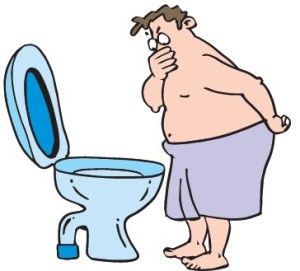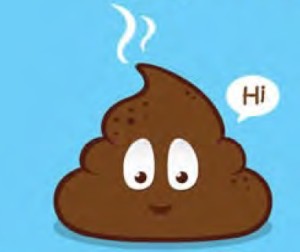Nov – 16: COVER STORY
What your pee and poop tells you about your health
Find out what is normal and when you should be worried
We live in a society where urinating and defecating are not activities we discuss with others. In fact, we seldom look at the toilet bowl after relieving ourselves. But, it is advisable to pay attention to the colour, odour and consistency of the urine and stool you pass.
In fact, your pee and poop can tell you a great deal about your overall health. If there is anything that looks a bit unusual about either of them, please consult your doctor.
Pee characteristics
Urine is generated by the kidneys to remove toxins that could make you sick if left in your blood.
What is normal: Healthy urine should be clear, straw-coloured and practically odourlesss. Some people find their pee smells stronger and is darker first thing in the morning when it’s more concentrated.
Shades of pee
The significance of different colours of pee are described below:
Dark yellow or brown: Dehydration
Colourless: Excess fluid intake
Red: Consumption of beetroot or artificial colours. Or a sign of blood loss, infection, enlarged prostate, cancer, cysts or kidney stones
Bright yellow or orange: Consumption of beta-carotene or vitamin B supplements
Purple: Associated with use of catheters and infections
Blue-green: Associated with certain medications or rare genetic conditions
Colour of syrup or molasses: Liver disease
Smell: Certain food and drinks including beer, garlic and coffee, may temporarily give your urine a stronger smell. If your pee is smelly (like ammonia) you could have an infection, urinary stones or a sexually transmitted disease. Sweet smelling urine could indicate diabetes.Â
Other factors: Frequent urination could be because of an infection or diabetes. Pain upon peeing could be due to an infection or kidney stones. Cloudy pee means you have an infection, or a problem with your kidneys. If your pee looks foamy and/or has sediments it could indicate it has protein in it – a sign of kidney disease.
Holding your pee
Holding your urine is not only uncomfortable, it could lead to urinary tract infections in women. Controlling the urge to urinate is only advisable if there is no clean toilet facility nearby.
Poop characteristics
Pooping regularly is vital to good health as it is your body’s natural way of expelling waste after it has absorbed the nutrients it needs from food. Faeces is made up of undigested food, bacteria, mucus and dead cells. That’s why it smells.
The food you eat usually takes 3 days to end up in your poop. On an average, people poop once or twice a day. But some may go more often and some less. There is no ‘normal’ frequency as long as you feel comfortable.
What is normal: Normal poop colour ranges from light yellow to brown. It should look like a smooth, soft cucumber. Healthy poop is easy to pass and sinks slowly in the toilet bowl.
Colour: When taking iron supplements it is natural to have black-coloured stool. But, black stool could indicate bleeding in the stomach or small intestine due to an ulcer or cancer. Poop that is yellow, greasy and foul-smelling signals malabsorption of food. Very pale or clay-coloured stool can result when taking some anti-diarrhoeal medications but could also signal bile duct obstruction. Dark yellow stool could signal problems with the liver or gall bladder. If your poop has lots of mucus it could indicate ulcerative colitis or colon cancer.
Red poop could indicate piles but also cancer. Green excrement may mean food is moving too fast through your large intestine.
Textures of poop
The significance of different textures of stool are described below:
Separate hard lumps: Constipation probably due to severe lack of fibre and fluids
Sausage-shaped with cracks: Need to consume more fluids
Sausage-shaped but lumpy: Need to consume more fibre and fluids
Soft blobs with clear-cut edges: Normal if you are pooping multiple times a day
Fluffy pieces with ragged edges: Signals onset of diarrhoea
Watery, no solid pieces: Diarrhoea, probably because of an infection
Soft, sticks to the side of toilet bowl: Presence of too much oil due to malabsorption of fat
Â





